Litter bins in the city have markers and colour segregation, but many Mumbaikars cannot differentiate between wet and dry waste
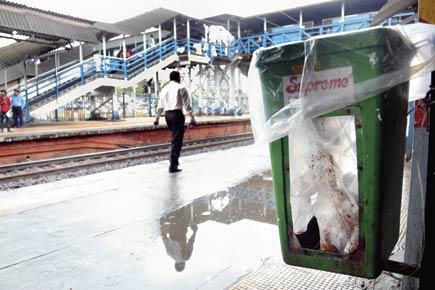
Some years ago, ‘Clean Mumbai Green Mumbai’ was the slogan in the city. The Brihanmumbai Municipal Corporation (BMC) seems to have taken a step up from this old campaign as bins in the city now have wet and dry waste options.
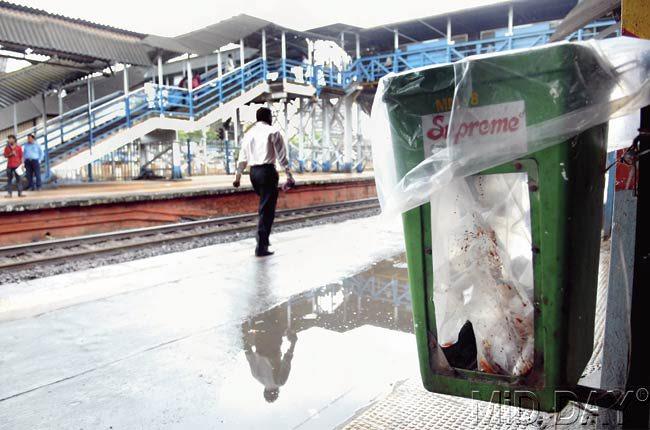
These green bins offer no choice and people say they prefer them to throw garbage. Pic/Shadab Khan
Gone are the old penguin-shaped dustbins at corners in the city, the sleek new bins have wet and dry waste option. It is always good to have a choice, but are Mumbaikars aware of what goes in which bin? We ask citizens about their knowledge of wet and dry waste.
Mixed up in the end
Alyssa Lobo, 25, Bandra resident says that she and her family ensure they segregate their garbage. The media professional says, “We put vegetable peels, food, nail clippings, etc in the wet garbage bin.
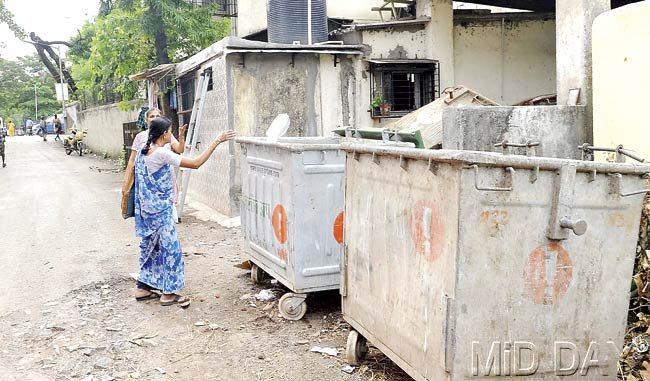
At Wadala’s Azad Nagar, the dustbin with waste outside is a microcosm of the garbage situation in the city. Pic/Suresh KK
Dry waste like paper, plastic, glass, etc goes in the dry bin. But when the garbage collector comes along we notice that all the waste ends up going in one huge dustbin.” Lobo adds, “We take care to segregate the waste, but it is sad to see that the van that comes to collect garbage has no wet and dry waste differentiation and so everything ends up going in there together.”
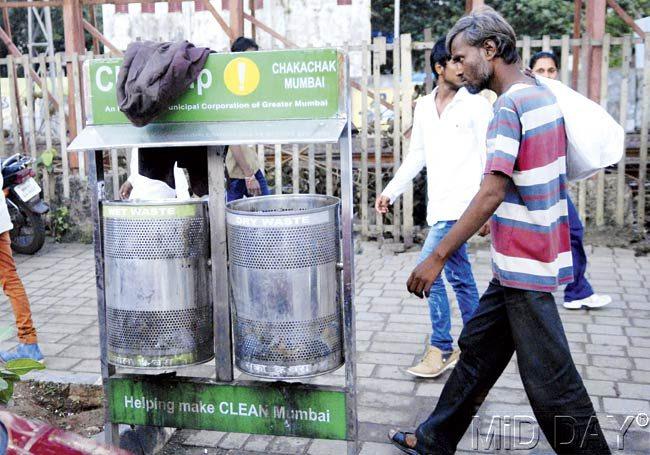
The options litter bins in the city offer citizens. Pic/Bipin Kokate
Similar views are expressed by Ghatkopar resident Shekar Puri, who says, “I sometimes segregate dry and wet waste but do not do it often. The process is annoying as you have to be mentally aware at all times. Often, there are some items which cannot be easily categorised and so there is a dilemma for people in my house.”
What goes where
For the man or woman on the street, being able to segregate where dry and wet waste should go has become an issue. Rashid Ansari, 62, a businessman from Malad says, “I often stand in front of the bin and spend about 30 seconds if not more contemplating where a particular piece of garbage will go. And then I decide which goes in the wet and dry waste bin. But there are many people who avoid using these bins.”
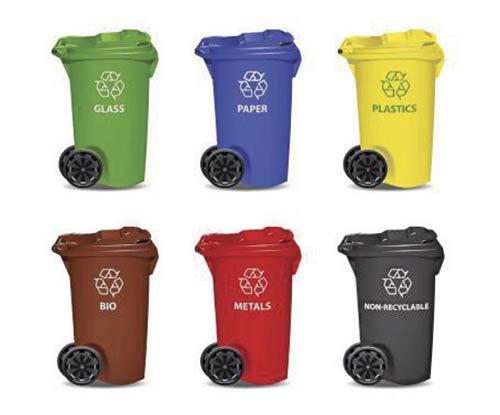
Bins abroad tell people what exactly to dispose where
Mulund resident Yuganand Shetty, 40 says, “At railway stations where the normal bins are there, I used them; but the wet and dry waste bins on the street puzzle me. Yes, I know what is wet and dry waste, but there is always that moment when I ponder when a bin offers options. Though the green bin with orange cap and grey bin are more distinct; the wet and dry options still confuse me.”


Alyssa Lobo and Yuganand Shetty
Anil Tagore, 37, a banker from Sion says, “I have actually seen people get frustrated with the segregated dustbins and instead prefer to throw the garbage around it. The authorities have done very little for awareness in the city and we cannot blame people for not using the bins appropriately. I make sure to throw paper and plastic in the dry bins and to put fruit in the wet bins.”
Wadala resident, Suvarna Gaikwad, 45, a teacher says, “In schools we teach students Environment Studies (EVS) where the details of wet and dry waste have been explained. However, I am not sure how many children go home and tell their parents to separate garbage. In our educations system, there is too much stress on theory rather than practical and as a result very little is practiced from what students learn in school.”
At Shivaji Vidyalaya, Mulund where she teaches, Gaikwad says that she tries to make her class segregate the classroom garbage so they can practice what they learn. “There is a message at the end of the lesson to tell your family and friends about it and create awareness. A few of my students came back to tell me that their parents were not very excited about having two bins.
Rather than teach students, this initiative of garbage segregation should be taken up by the government authorities making it mandatory for every household to segregate waste and collection should also be based on the same,” says Gaikwad.
Social awareness
In Santacruz (West), Triratna Prerana Mandal (TPM), a Non Government Organisation (NGO) that works with sanitation awareness has a segregation centre where garbage from the area is sorted into wet and dry waste. Sajid Asif Durani and his family of four; work from 8 am to 8 pm every day segregating the garbage.
Durani says, “Plastic, cloth and paper are all sold while all the wet garbage is handed to the BMC van and is then taken to the dumping grounds. Some households give garbage which is segregated and we collect dry and wet waste separately. But there are those that put it all in one bin; so we have to physically go through the garbage and sort it out.”
“Our NGO has created awareness among the people in the slums as well as the societies in the area, going house to house and talking to people about wet and dry waste. Almost all households now segregate waste, thanks to the pamphlets and message we have spread in the last three to five years,” says Sunita Bhavekar from TPM.
Official speaks
Deputy Municipal Commissioner of Solid Waste Management from the BMC, Prakash Patil says, “The dry and wet waste litter boxes were placed in the city about three months ago. A litter box is different from a dustbin as the former is for garbage that is thrown by floating population in the city while the latter is for household waste.”
Explaining what should go in the dry and wet waste litter boxes; Patil says, “All biodegradable waste is categorised as wet waste. And all non-biodegradable waste which can be recycled, is dry waste. In certain wards in the city there are provisions for people to give dry and wet waste separately when the garbage collection is done. But on the whole garbage is collected together around the city.”
“Wards were told to create awareness of dry and wet waste; also students in various schools in the city through the EVS curriculum have been taught about wet and dry waste. In the coming months, the BMC will also conduct an awareness drive to help citizens in Mumbai better understand what dry and wet waste is,” ends Patil.
 Subscribe today by clicking the link and stay updated with the latest news!" Click here!
Subscribe today by clicking the link and stay updated with the latest news!" Click here!









